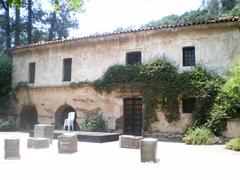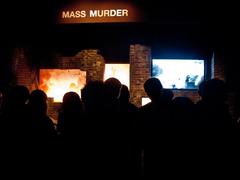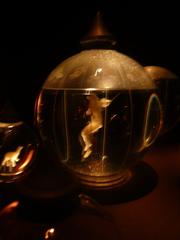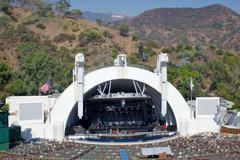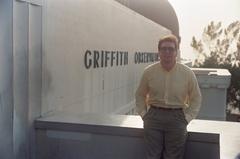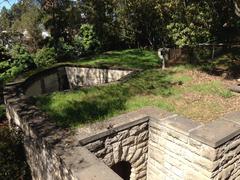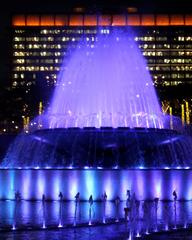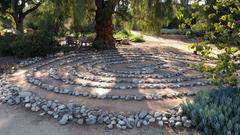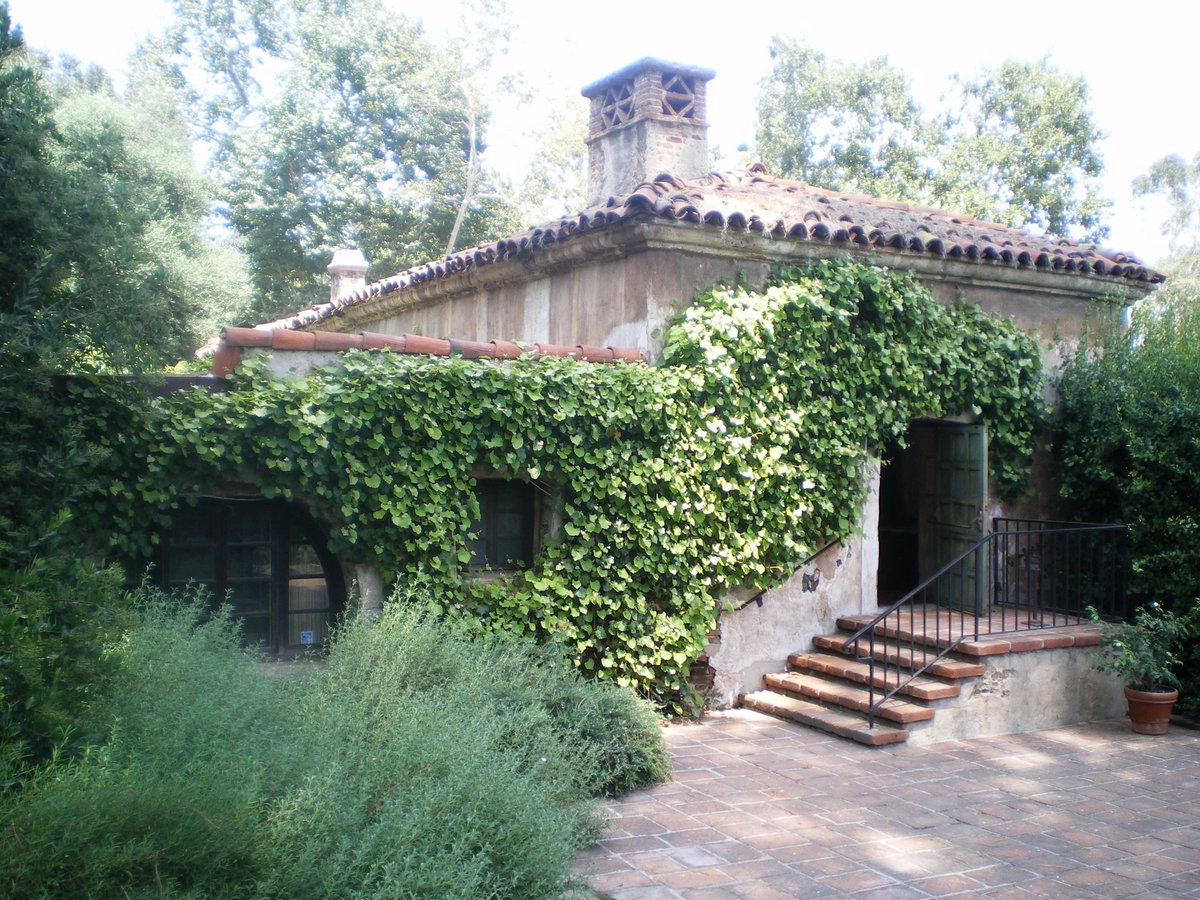
Visiting El Molino Viejo: History, Tickets, and Travel Tips in Los Angeles
Date: 01/08/2024
Introduction
El Molino Viejo, also known as The Old Mill, is a historic grist mill situated in the picturesque San Rafael Hills of San Marino, California. Constructed in 1816 by Father José María de Zalvidea from the Mission San Gabriel Arcángel, it stands as the oldest commercial building in Southern California (Wikipedia). This historic site offers visitors a unique opportunity to delve into the rich history and architectural heritage of early Californian life. Managed by the Old Mill Foundation, El Molino Viejo has transformed from a functional grist mill to a cherished historical landmark recognized at both state and national levels (Old Mill Foundation). This comprehensive guide will not only take you through its historical and architectural significance but also provide essential visitor information, making it an ideal resource for history enthusiasts and tourists alike.
Table of Contents
Historical Background
Construction and Early Use
El Molino Viejo was constructed in 1816 by Father José María de Zalvidea from the Mission San Gabriel Arcángel, making it the oldest commercial building in Southern California (Wikipedia). The construction was carried out by Tongva Mission Indian laborers under the supervision of Father Zalvidea. The original two-story structure measured 53 by 26 feet and was built using adobe, a traditional building material in the region (Old Mill Foundation).
Function as a Grist Mill
El Molino Viejo served as a grist mill for the San Gabriel Mission, providing essential ground grain for the mission and the surrounding area. The mill was operational from 1816 to 1823, playing a crucial role in supporting the mission’s agricultural activities. A newer and more efficient mill was constructed adjacent to El Molino Viejo in 1823, rendering the original mill obsolete (Old Mill Foundation).
Transition to Residential Use
In 1858, the property was inherited by the Kewen family, who refurbished the original structure by adding a patio and large windows while maintaining its original architectural style. They lived in the mill for 20 years before defaulting on a mortgage in 1879 (Old Mill Foundation).
Rediscovery and Restoration
The mill was largely forgotten until 1896 when a Los Angeles Times article by Topsy Tinkle brought it back into public awareness. This renewed interest led to the Huntington family’s purchase of the property in 1903. By 1914, the mill had been converted into a golf course clubhouse for the Huntington Hotel, now known as the Langham (Old Mill Foundation).
20th Century Developments
Throughout the 20th century, El Molino Viejo underwent several phases of disrepair and restoration. In the 1920s, the mill fell into disrepair again but was restored and rented out from 1927 to 1962. In 1962, the property was gifted to the city of San Marino, which used it as the headquarters for the California Historical Society in 1965. For the next 30 years, the society ran community historical programs from the site (Old Mill Foundation).
Modern-Day Significance
In 1995, the Old Mill Foundation was established to oversee and manage the mill. Today, El Molino Viejo functions as a museum and office space for the foundation’s staff. The building is a prime example of western adobe-style architecture and has been recognized as a historic site at both the state and national levels. It was one of the first ten sites in Los Angeles County to be listed on the National Register of Historic Places in 1971 and has also been designated as a California Historical Landmark (Wikipedia).
Architectural Features
El Molino Viejo is notable for its thick adobe walls and textured ceiling rafters, which give the interior a sense of quiet strength. The building’s construction materials include layers of brick, ground seashell paste, and ox blood, which can be seen in a chipped section of the mill’s exterior. The surrounding gardens, featuring a flower-decked arbor and old sycamores and oaks, add to the site’s charm (Fodor’s Travel).
Cultural and Historical Impact
El Molino Viejo holds a significant place in Southern California’s history. It serves as a tangible link to the region’s Spanish Mission era and the early commercial activities that supported the missions. The millstones, which were rediscovered by General George S. Patton during his childhood, are now displayed on the patio, surrounded by lush landscaping tended by the Diggers Garden Club of Pasadena (Etan Does LA).
Visitor Information
Visiting Hours
El Molino Viejo is open to the public from Tuesday to Sunday. The mill building and gallery operate from 11:00 AM to 2:00 PM, while the gardens are accessible from 9:00 AM to 4:00 PM. This schedule allows ample time to explore both the historical structure and the surrounding gardens.
Tickets
Admission to El Molino Viejo is free, making it an affordable outing for individuals and families. Donations are encouraged to support the ongoing preservation efforts.
Travel Tips
The mill is located in San Marino, California, and is easily accessible by car. Ample parking is available on-site. For those using public transportation, check local bus routes that stop near the mill. Ride-sharing services like Uber and Lyft are also viable options for reaching the site.
Nearby Attractions
While visiting El Molino Viejo, consider exploring other nearby attractions such as the Huntington Library, Art Museum, and Botanical Gardens, and the San Gabriel Mission.
Accessibility
The site is partially accessible to visitors with mobility issues. The gardens and ground floor are wheelchair accessible, but the upper floors may be challenging to navigate.
Conclusion
El Molino Viejo stands as a testament to Southern California’s rich history and architectural heritage. Its journey from a functional grist mill to a cherished historical landmark highlights the region’s evolving landscape and the importance of preserving such sites for future generations. Plan your visit today to experience this unique historical treasure firsthand.
FAQ
Q: What are the visiting hours for El Molino Viejo? A: El Molino Viejo is open from Tuesday to Sunday. The mill building and gallery are open from 11:00 AM to 2:00 PM, while the gardens are accessible from 9:00 AM to 4:00 PM.
Q: How much are tickets to El Molino Viejo? A: Admission is free, but donations are encouraged.
Q: What are some nearby attractions? A: Nearby attractions include the Huntington Library, Art Museum, and Botanical Gardens, and the San Gabriel Mission.
Q: Is El Molino Viejo accessible for visitors with mobility issues? A: The site is partially accessible, with wheelchair access to the gardens and ground floor.
Sources
- Wikipedia contributors. (n.d.). El Molino Viejo. In Wikipedia, The Free Encyclopedia. Retrieved [date], from https://en.wikipedia.org/wiki/El_Molino_Viejo
- Old Mill Foundation. (n.d.). History. Retrieved [date], from https://www.old-mill.org/history
- Old Mill Foundation. (n.d.). Who We Are. Retrieved [date], from https://www.old-mill.org/who-we-are
- Fodor’s Travel. (n.d.). The Old Mill (El Molino Viejo). Retrieved [date], from https://www.fodors.com/world/north-america/usa/california/los-angeles/things-to-do/sights/reviews/the-old-mill-el-molino-viejo-177563
- Etan Does LA. (n.d.). The Old Mill (El Molino Viejo). Retrieved [date], from https://etandoesla.com/47-the-old-mill-el-molino-viejo/
- Yelp. (n.d.). Old Mill Foundation. Retrieved [date], from https://www.yelp.com/biz/old-mill-foundation-san-marino
- Pasadena Convention & Visitor Bureau. (n.d.). The Old Mill (El Molino Viejo). Retrieved [date], from https://www.visitpasadena.com/directory/the-old-mill-el-molino-viejo/

